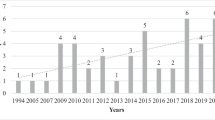Abstract
A number of optimization techniques have been used by researchers to solve the non-convex Economic Dispatch (ED) problem. In this paper, we have applied Wind-Driven Optimization (WDO), a heuristic global optimization technique to solve the ED problem. The technique was applied to three different test systems and the results obtained were compared and analyzed with the results obtained from other techniques. MATLAB R2017a was used for the coding and execution of the algorithm.
Access this chapter
Tax calculation will be finalised at checkout
Purchases are for personal use only
Similar content being viewed by others
Abbreviations
- ED:
-
Economic Dispatch
- WDO:
-
Wind-Driven Optimization
References
Kumar, A.I.S., et al.: Particle swarm optimization solution to emission and economic dispatch problem. In: Conference on Convergent Technologies for the Asia-Pacific Region, TENCON 2003, vol. 1. IEEE (2003)
Gopalakrishnan, R., Krishnan, A.: An efficient technique to solve combined economic and emission dispatch problem using modified Ant colony optimization. Sadhana 38(4), 545–556 (2013)
Abdelaziz, A.Y., Ali, E.S., Abd Elazim, S.M.: Combined economic and emission dispatch solution using flower pollination algorithm. Int. J. Electr. Power Energy Syst. 80, 264–274 (2016)
Aydin, D., et al.: Artificial bee colony algorithm with dynamic population size to combined economic and emission dispatch problem. Int. J. Electr. Power Energy Syst. 54, 144–153 (2014)
Venkatesh, P., Gnanadass, R., Padhy, N.P.: Comparison and application of evolutionary programming techniques to combined economic emission dispatch with line flow constraints. IEEE Trans. Power Syst. 18(2), 688–697 (2003)
Jeyakumar, D.N., Jayabarathi, T., Raghunathan, T.: Particle swarm optimization for various types of economic dispatch problems. Int. J. Electr. Power Energy Syst. 28(1), 36–42 (2006)
Basu, M.: Economic environmental dispatch using multi-objective differential evolution. Appl. Soft Comput. 11(2), 2845–2853 (2011)
Güvenç, U., et al.: Combined economic and emission dispatch solution using gravitational search algorithm. Sci. Iran. 19(6), 1754–1762 (2012)
Chatterjee, A., Ghoshal, S.P., Mukherjee, V.: Solution of combined economic and emission dispatch problems of power systems by an opposition-based harmony search algorithm. Int. J. Electr. Power Energy Syst. 39(1), 9–20 (2012)
Bayraktar, Z., Komurcu, M., Bossard, J.A., Werner, D.H.: The wind driven optimization technique and its application in electromagnetics. IEEE Trans. Antennas Propag. 61(5), 2745–2757 (2013)
Mathew, D., Rani, C., Kumar, M.R., Wang, Y., Binns, R., Busawon, K.: Wind-driven optimization technique for estimation of solar photovoltaic parameters. IEEE J. Photovolt. 8(1), 248–256 (2018)
Bhandari, A.K., Singh, V.K., Kumar, A., Singh, G.K.: Cuckoo search algorithm and wind driven optimization based study of satellite image segmentation for multilevel thresholding using Kapur’s entropy. Expert Syst. Appl. 41(7), 3538–3560 (2014)
Güvenç, U.: Combined economic emission dispatch solution using genetic algorithm based on similarity crossover. Sci. Res. Essays 5(17), 2451–2456 (2010)
dos Santos Coelho, L., Lee, C.-S.: Solving economic load dispatch problems in power systems using chaotic and Gaussian particle swarm optimization approaches. Int. J. Electr. Power Energy Syst. 30(5), 297–307 (2008)
Balamurugan, R., Subramanian, S.: A simplified recursive approach to combined economic emission dispatch. Electr. Power Comp. Syst. 36(1), 17–27 (2007)
Dhanalakshmi, S., Kannan, S., Mahadevan, K., Baskar, S.: Application of modified NSGA-II algorithm to combined economic and emission dispatch problem. Int. J. Electr. Power Energy Syst. 33(4), 992–1002 (2011)
Author information
Authors and Affiliations
Corresponding author
Editor information
Editors and Affiliations
Rights and permissions
Copyright information
© 2020 Springer Nature Singapore Pte Ltd.
About this paper
Cite this paper
Udhay Sankar, V., Bhanutej, Hussaian Basha, C.H., Mathew, D., Rani, C., Busawon, K. (2020). Application of Wind-Driven Optimization for Decision-Making in Economic Dispatch Problem. In: Das, K., Bansal, J., Deep, K., Nagar, A., Pathipooranam, P., Naidu, R. (eds) Soft Computing for Problem Solving. Advances in Intelligent Systems and Computing, vol 1048. Springer, Singapore. https://doi.org/10.1007/978-981-15-0035-0_74
Download citation
DOI: https://doi.org/10.1007/978-981-15-0035-0_74
Published:
Publisher Name: Springer, Singapore
Print ISBN: 978-981-15-0034-3
Online ISBN: 978-981-15-0035-0
eBook Packages: Intelligent Technologies and RoboticsIntelligent Technologies and Robotics (R0)




